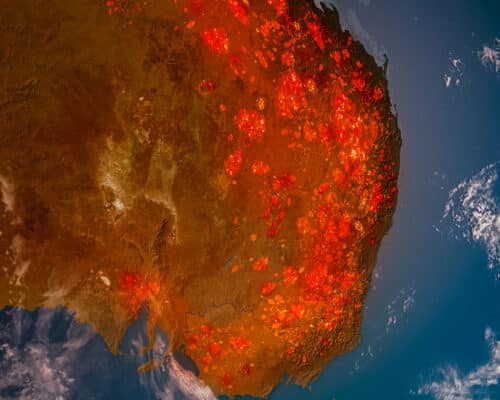Battery Energy Storage Systems Development – ASEAN Members Fall Behind
12 June 2024 – by Tim Daiss Comments (0)
BESS Singapore
Of the 11 ASEAN members, Singapore is taking the lead in the battery energy storage systems (BESS) space. Earlier this year, the city-state launched the region’s largest battery energy storage system (BESS). Construction of the 285MWh giant container-like battery system was built in just six months, becoming the fastest BESS of its size in the world to be completed. As a result of the project, Singapore has reached its BESS goal of over 200 MWh of energy storage capacity three years ahead of schedule.
Singapore’s new BESS will help mitigate the solar intermittency caused by changing weather conditions in the region’s tropical climate. Because wind and solar resources aren’t constantly available and predictable, they’re referred to as intermittent energy resources.
What Is a Battery Energy Storage System (BESS)?
A battery energy storage system is a power station that uses batteries to store excess energy. A BESS is a potential unsung hero in the world’s efforts to pivot to more renewable energy sources in the power sector. Battery storage is considered the fastest responding source of power on grids and is used to stabilise an otherwise unstable grid system. It is necessary for an uninterruptible power supply.
A BESS can be charged by electricity generated from renewable energy, like wind and solar power. Battery storage systems can also provide reserves for the power grid, which frees up power generation plants to generate more electricity to meet demand when needed. Since a BESS is a backup power source, like any energy source that feeds the grid, it has to be managed and controlled.
Lead-acid Battery Market in Southeast Asia
The lead-acid battery market in Southeast Asia is rapidly evolving, driven by the increasing demand for reliable energy storage solutions across various industries. With the rise of renewable energy sources like solar and wind power, lead-acid batteries are becoming an essential component of off-grid power systems in the region, they are also an essential component of electric vehicles.
Types of Energy Storage
However, energy storage solutions include both batteries and thermal or mechanical systems, including flywheels and pumped hydropower. These technologies can be paired with software that controls the charge and discharge of energy.
How Does a Battery Storage System Work?
Intelligent battery software uses algorithms to coordinate energy production, and computerised control systems are used to decide when to store energy or to release it to the electric grid.
Stored energy is released from the BESS during peak demand, keeping costs down and providing a stable electricity supply for energy consumption. It helps when sun irradiance for solar panels or wind speeds for wind power projects aren’t strong enough to produce the needed levels of electricity.
Gas Industry Hijacks BESS
However, as is often the case, the natural gas industry is still trying to adapt sustainability strategies to justify its continued development.
This same dynamic is afoot with BESS. Many in the gas industry call for integrating energy storage technologies like BESS at natural gas-fired facilities. Moreover, they further promulgate all of battery storage’s selling points to justify the technology for their fossil fuel projects.
They assert that BESS technology is suitable for storing energy from renewable and non-renewable sources. However, this only serves to lengthen the life of fossil fuels.
What Type of Battery Is Best for BESS?
Lithium-ion batteries, usually used in smartphones and electric vehicles (EVs), are the dominant technology to store energy for mid to large-scale power plants to help electricity grids ensure a reliable supply of energy.
Typical BESS components include battery modules, a storage enclosure with thermal management, a power conversion system (PCS), a battery management system (BMS) and an energy management system (EMS).
ASEAN Falls Behind
A few other ASEAN countries are also starting to wake up to the advantages of BESS in their respective energy sectors. But, it’s a slow start.
The Philippines started its first BESS in April with a 1,000-MW capacity system. It is located in Bataan Province, some 140 km north of Manila, the country’s capital.
The Philippines is also taking the initiative to implement BESS for off-grid solar applications. This is expected, since ASEAN comprises many island countries with underdeveloped off-grid communities.
Cambodia, ASEAN’s smallest country with only 17 million people, recently inked a transaction advisory services mandate with the Asian Development Bank (ADB) to support 2 GW of solar development in the country and BESS to be implemented this year through 2030.
Indonesia and Thailand have made modest BESS inroads, with both countries already launching battery storage pilot programs. Other ASEAN members plan to launch pilot programs, while a disturbingly large number are seemingly ignoring the technology altogether.
Policy Changes Needed
Beni Suryadi, manager of power, fossil fuel, alternative energy and storage at the ASEAN Centre for Energy, told Energy Tracker Asia that there remains a lot of work to do to get the region sold on the benefits of BESS, calling it “a crucial task.”
“But what is also equally important at this point is educating the regulators or regulatory bodies,” he said. “That lack of involvement is the biggest challenge facing the adoption of energy storage today because regulators in ASEAN aren’t yet arming themselves with technical knowledge on the benefits of batteries and other storage technologies.”
Suryadi explained that the change must happen at a policy level.
“There aren’t so many regulators looking at storage as part of the solution for their power mix,” he added. “There are incentive programs and support schemes for renewable energy like solar PV, wind and other clean energy sources, but not for BESS and other storage tech.”
“This hasn’t yet happened for energy storage because, in many cases, policymakers and regulators aren’t aware of the benefits energy storage can offer, which include helping to lower the cost of running energy systems.”
“Without that awareness,” he added, “incentives for storage are seen as a cost burden. This is starting to change, and awareness is growing, but it will take time.”
The ASEAN bloc has set the targets of 23% renewable energy in its Total Primary Energy Supply (TPES) and 35% renewable energy in ASEAN installed power capacity by 2025. This means that energy storage is required.
Additionally, without BESS acceptance on a larger level, the needed funds won’t materialise, and fewer BESS will be built. It’s a circular problem that must be addressed to help the region reach its collective net-zero goals.
by Tim Daiss
Tim has been working in energy markets in the Asia-Pacific region for more than ten years. He was trained as an LNG and oil markets analyst and writer then switched to working in sustainable energy, including solar and wind power project financing and due diligence. He’s performed regulatory, geopolitical and market due diligence for energy projects in Vietnam, Thailand and Indonesia. He’s also worked as a consultant/advisor for US, UK and Singapore-based energy consultancies including Wood Mackenzie, Enerdata, S&P Global, KBR, Critical Resource, and others. He is the Chief Marketing Officer (CMO) for US-based lithium-sulfur EV battery start-up Bemp Research Corp.
Read more







